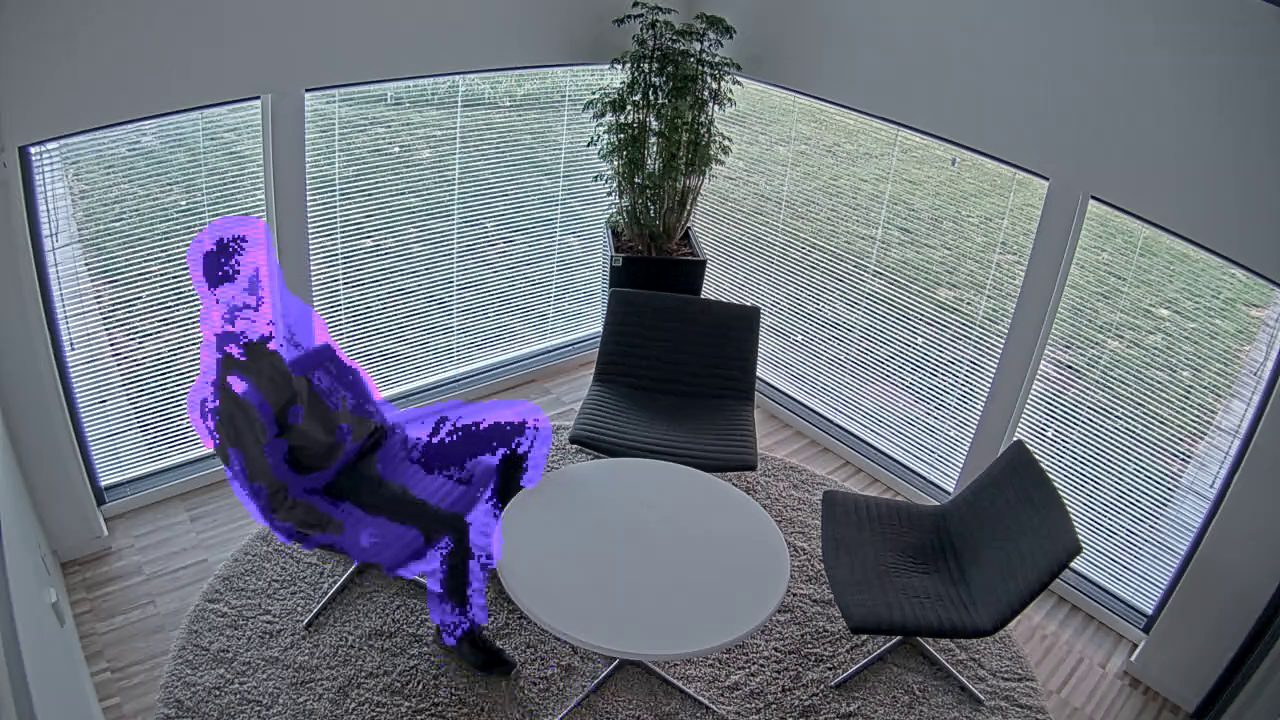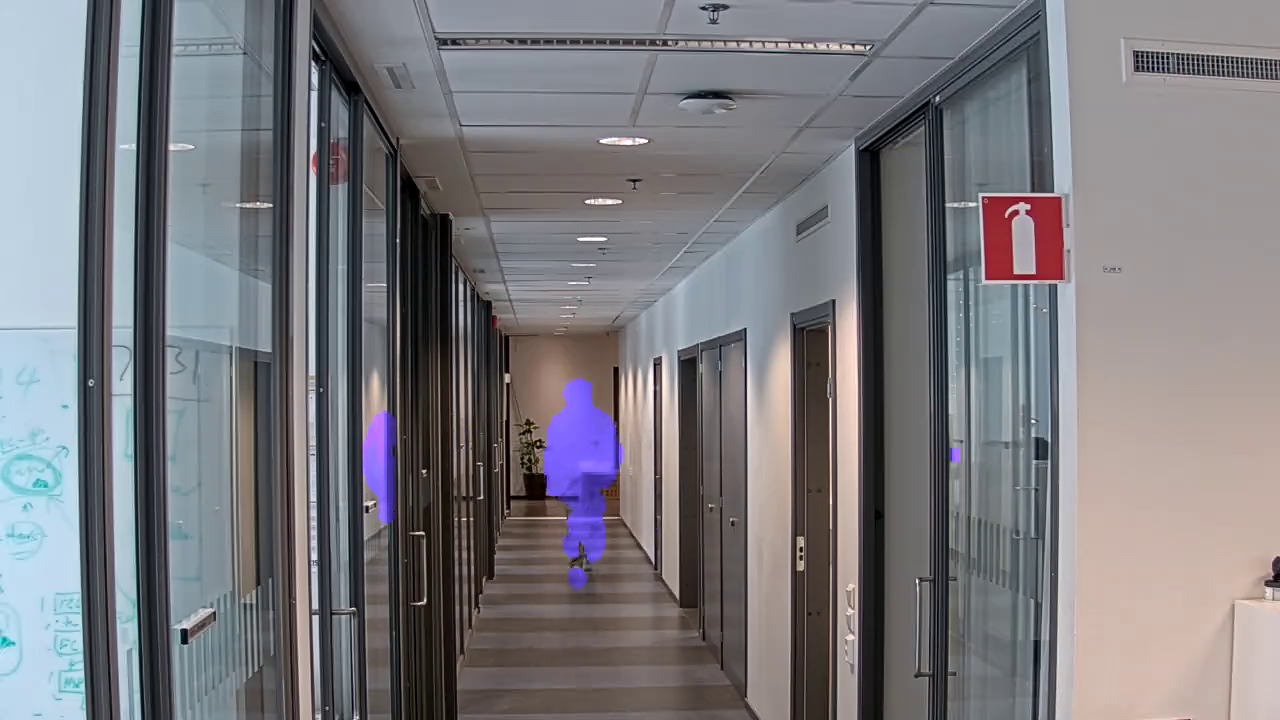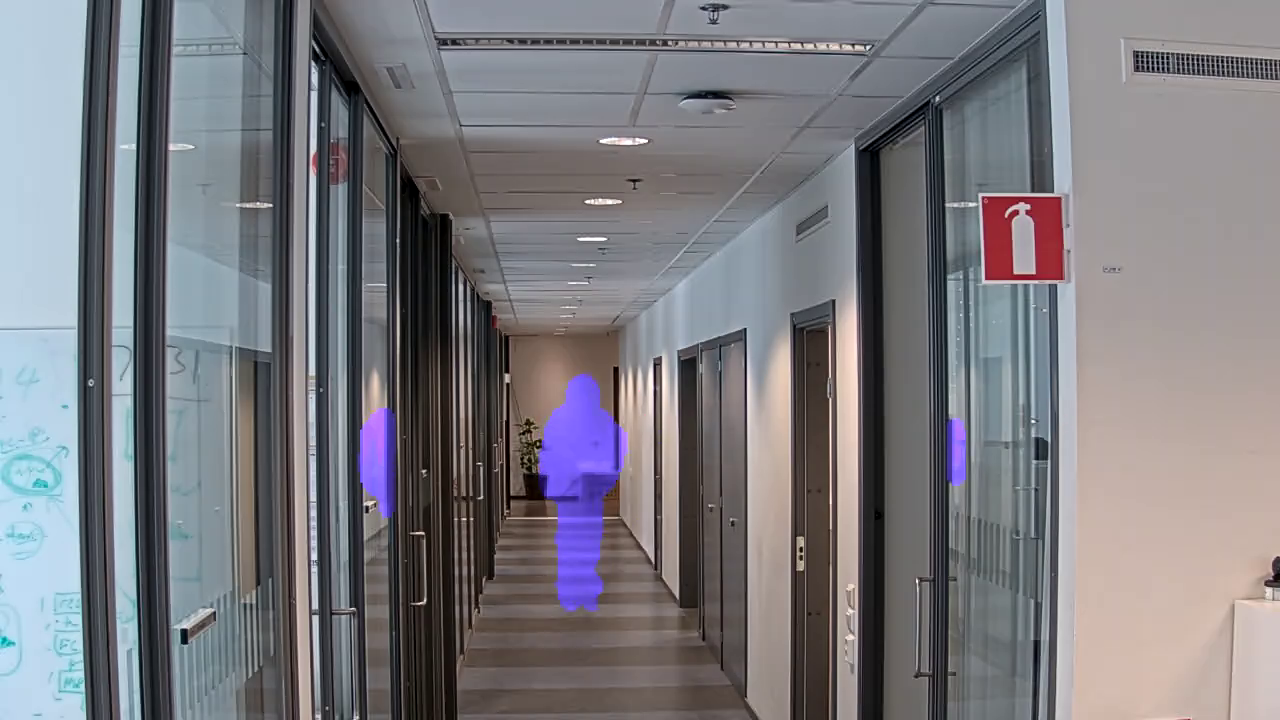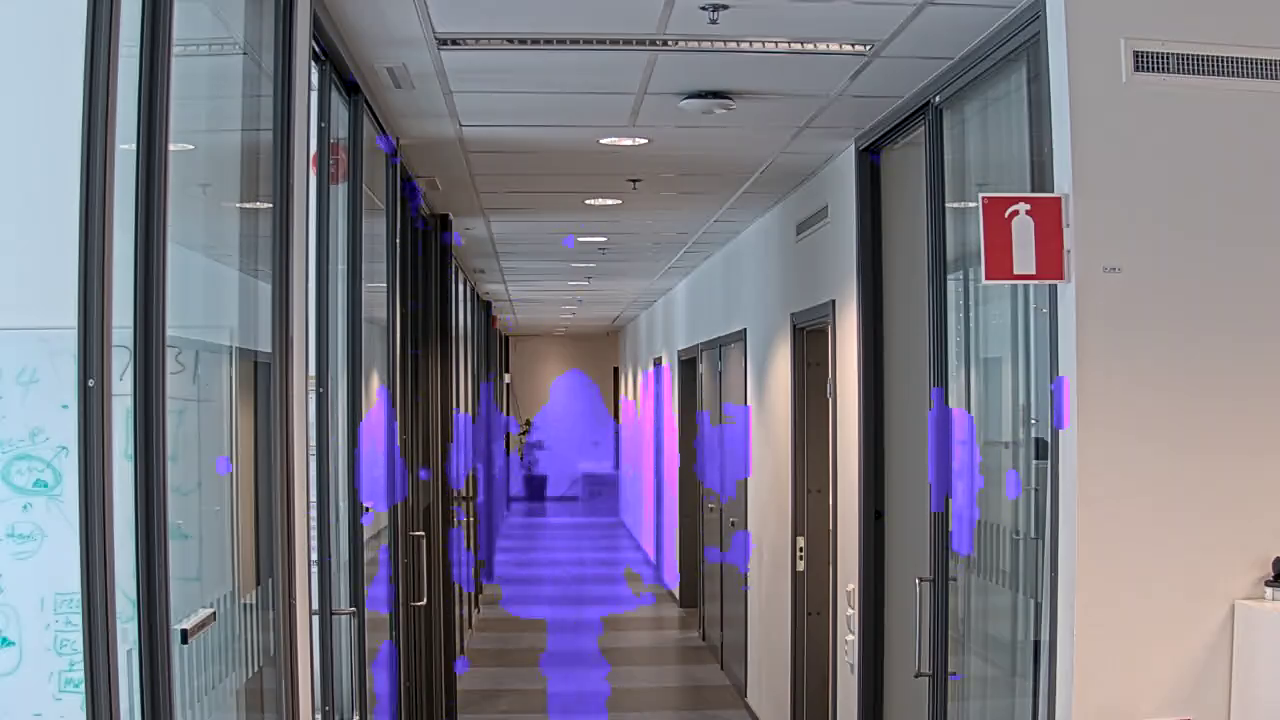About the application
AXIS Live Privacy Shield remotely monitors activities while safeguarding privacy. It supports two different methods for real-time dynamic privacy masking.
All compatible cameras can use the motion-based masking method to mask all moving objects as compared with the background scene. This masking method supports strict privacy requirements and is suitable for indoor scenes with good, stable lighting.
Compatible DLPU cameras can additionally use the application’s AI-based human recognition masking method to mask humans or faces. The masking method can also be inverted to mask out the background instead. AI-based masking method is suitable for indoor or outdoor scenes in all lighting conditions.
Requirements
The application can be installed on Axis network video devices that support AXIS Camera Application Platform. A complete list of compatible devices and firmware versions is available at axis.com/applications
We recommend the following browsers:
ChromeTM
Firefox®
Install the application
To install applications on the product you need administrator rights.
To download the application, go to https://www.axis.com/products/analytics-and-other-applications.
Log in to the camera’s webpage.
Go to Settings > Apps and click Add.
Upload the application file to the camera.
Start the application
Log in to the camera’s webpage and go to Settings > Apps.
Select the application.
Turn on the application with the toggle button.
For motion based masking method: To protect privacy, make sure no one is in the scene.
Stop the application
Log in to the camera’s webpage and go to Settings > Apps.
Select the application.
Turn off the application with the toggle button.
Considerations
Before you configure the application make sure that your scene meets the criteria specified in this section.
General considerations
The following should be taken into consideration when using both motion-based masking method and AI-based masking method.
It is recommended that the image is leveled with the horizon.
The object needs to stand out from the background. For example a person dressed in white in a snowstorm or a person dressed in black on a dark pavement might not be detected.
Barrel distortion is a lens effect where straight lines appear increasingly bent closer to the edges of the frame. If your camera supports barrel distortion correction, make sure to turn it on through the camera´s settings.
Considerations motion-based masking method
The motion-based masking method should preferably be used indoors, where there is a constant light source. It is not ideal outdoors where reflective surfaces, daylight shadows or swaying objects are common.
Considerations AI-based masking method
In the parts of a scene where the pixel density is less than 100 pixels/meter (30 pixels/foot) there is a chance that a person may not be completely masked. Use the free online tool, AXIS Site Designer at https://sitedesigner.axis.com/to calculate the pixel density in your scene. Determine the optimal placement of the camera to achieve an appropriate masking coverage.
Make sure humans are not obscured by, for example, foliage or fences.
Humans needs to move in a somewhat upright position.
A person needs to be close enough to the camera for the application to accurately distinguish their human form.
Avoid reflective surfaces in the scene. The AI-based masking method may fail to mask reflections.
Configure the application
The first step in setting up the application is to select masking method.
Make sure that the conditions in General considerations are met.
Log in to the camera’s webpage as an administrator and go to Settings > Apps > AXIS Live Privacy Shield.
Select the application and click Open.
Select a Masking method.
Continue to one of the following:
Only cameras with DLPU (deep learning processing unit) supports AI-based masking. For a complete list of supported cameras please refer to axis.com.
Configure the application with motion-based masking method
Make sure that the conditions in Considerations motion-based masking method are met.
Disable Wide Dynamic Range (WDR) from the camera configuration for optimal behavior of the application.
Configure Include area and Exclude areas to define what parts of the scene in which moving objects should be masked.
Configure the masks by setting Sensitivity, Background merge time and Priority.
Select the look for the mask. Choose between mosaic, color and transparent.
Do not configure the application while there are moving objects, which require continuous privacy, in the scene. While changing between settings there is a risk that these objects become visible for a short period of time.
Configure the application with AI-based masking method
Make sure that the conditions in Considerations AI-based masking method are met.
Select whether to mask humans or faces.
Select whether to keep the masking as selected above or to invert it.
Configure Include area and Exclude areas to define what parts of the scene that should be masked.
Set the Sensitivity of the mask.
Select the look for the mask. Choose between mosaic and color.
Settings
Masking method
Select a Masking method. Either Motion-based masking method or AI-based masking method.
The motion-based masking method masks all pixel changes (i.e. moving objects) as compared with a background scene. It is designed for use in indoor scenes with good, stable lighting and where strict privacy requirements are paramount.
The AI-based masking method determines if a human form appears in a scene and enables masking method of humans or faces. The mask can also be inverted, showing only humans or faces and masking the background. It is suitable for indoor and outdoor applications that want to retain the most detail in an image and can accept that masking may be imperfect in certain instances.
This video compares the two methods side-by-side. In the scene with motion-based masking method both swings and people are masked out, since they are all moving. In the scene with AI-based masking method only the child on the swing and the person pushing the swing are masked out.
Include area
The application masks all relevant objects in the include area.
The default include area is a rectangle that covers the whole image.
Use the mouse to reshape and resize the area so that it only covers the part of the image in which objects should be masked. The default rectangle can be changed to a polygon with up to 20 corners.
To add a new corner, click the border of the include area. Drag the corner to the desired position.
To move a corner, click and drag the corner to the new position.
To remove a corner, right-click the corner.
To move the entire include area, place the mouse pointer inside the area. Click and drag the area to the new position.
Exclude areas
The application does not mask any objects in an exclude area. Place the exclude area inside an include area. Use exclude areas where you do not want to mask objects.
Use the mouse to move, reshape, and resize the area so that it covers the desired part of the image. The default rectangle can be changed to a polygon with up to 20 corners.
To add a new corner, click the exclude area border. Drag the corner to the desired position.
To move a corner, click and drag the corner to the new position.
To remove a corner, right-click the corner.
To move the exclude area, place the pointer inside the area. Click and drag the area to the new position.
To add an exclude area, click
To select an exclude area, click in the exclude area, or click
To remove an exclude area, click
Background merge time
This setting is only relevant when using motion based masking method. The background merge time is the time an object needs to remain stationary until it is considered a part of the background image. Once considered part of the background image, the object becomes unmasked even if it is within an include area.
Long background merge time:
This is a meeting room, where people often sit still for a longer period of time and where there generally is little movement. To avoid people being considered a part of the background image (and being unmasked) we recommend to add a longer background merge time.

Short background merge time:
If an object (that originally is a part of the background image) is moved from one position to another the application will mask both changes. The two changes from the original background image are:
the object is moved from its original position
the object’s new position
This is a factory where people and things are in moving constantly. An object that first was considered a part of the background image is moved to another part of the scene. If this happens to several objects in the scene and there is a long background merge time the scene will soon contain a lot of unwanted masks (artifacts). The masks will not disappear until the background merge time has ended.
Sensitivity
Setting sensitivity too high will introduce more artifacts in the scene. Setting it too low could mean that some pixels that should be covered are displayed as normal.



Reset background
Clean up artifacts or unwanted masked objects. Click Reset background to force a reset of the background scene. This setting is only relevant for motion-based masking method.
Priority
Choose whether to prioritize mask detail or frame rate in a stream. The default priority is frame rate.
Frame rate: Prioritizes frame rate for a smoother stream. The mask detail will decrease.
Mask detail: Prioritizes mask detail for a higher pixel density of the mask outline. The frame rate will be lower.
Access unmasked stream
Create a view area:
Go to Video > View Areas.
: Create a new view area.
Access the view area settings.
Name: Type a name for the view area. The maximum length is 64 characters.
Aspect ratio: Select desired aspect ratio. The resolution adjusts automatically.
- Note
Select same aspect ratio as the camera’s capture mode.
Unmask the stream:
Go to Apps > Axis Live Privacy Shield.
Unmasked view area: Select the view area you want to unmask.